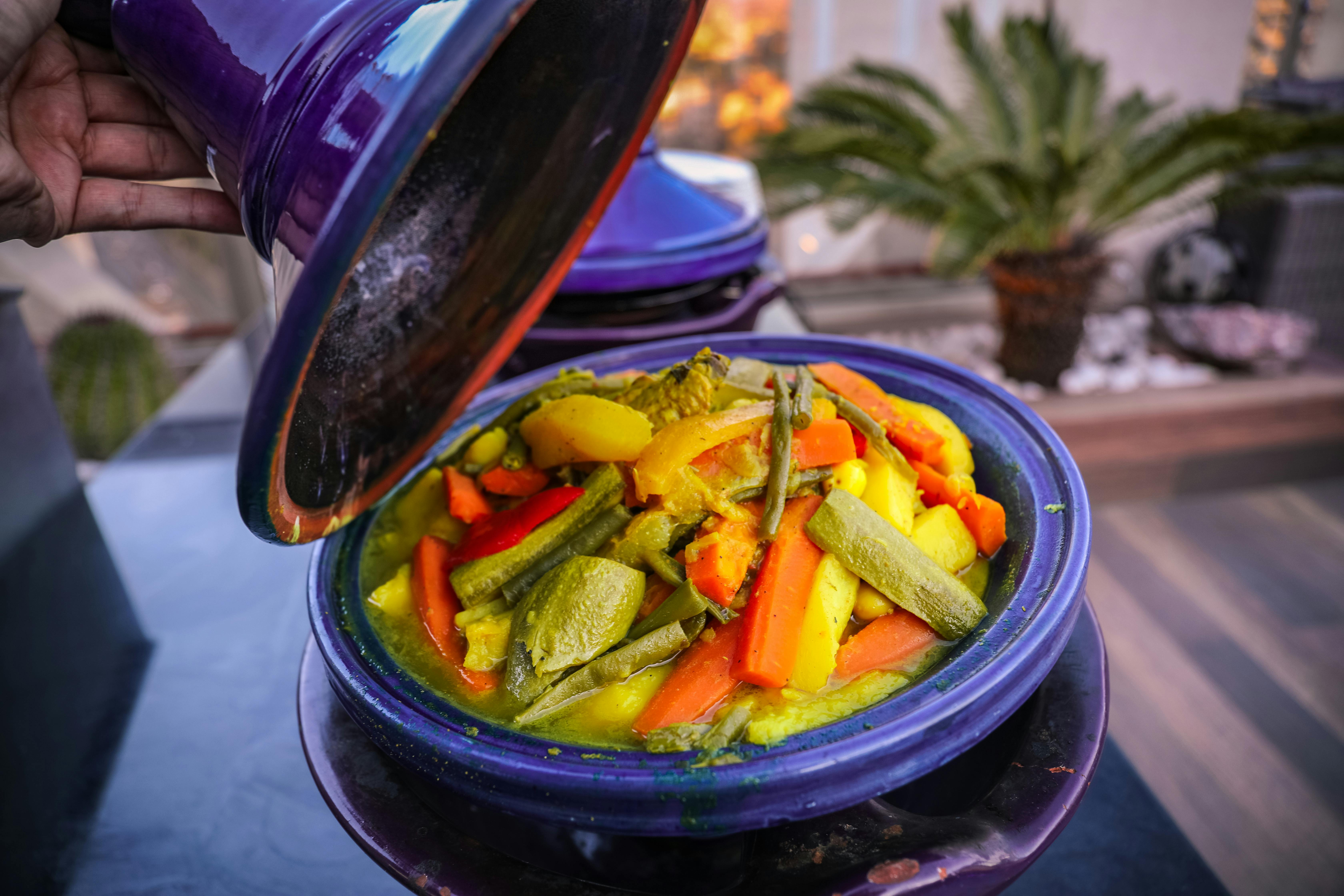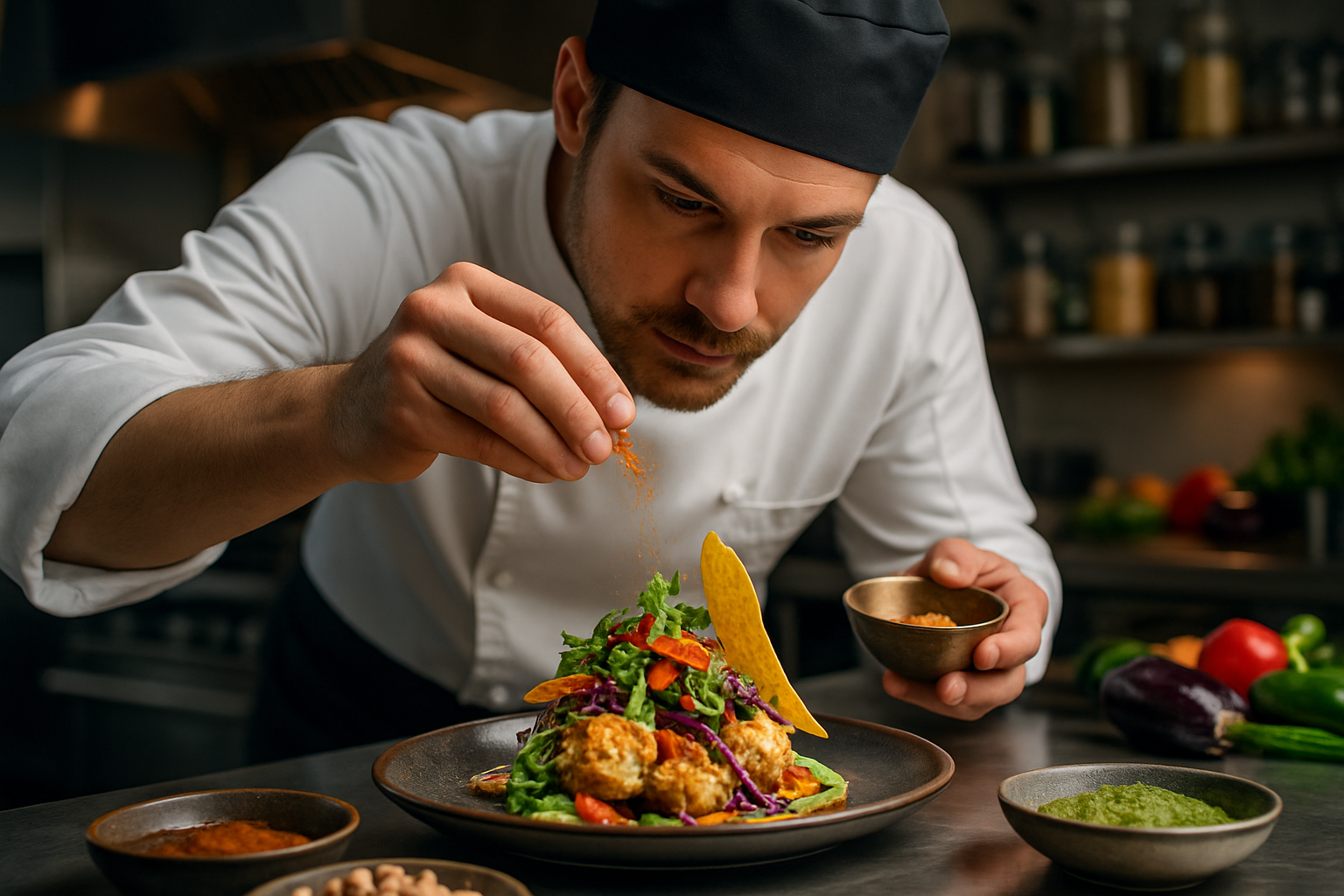Digging Deep into the World of Moroccan Cuisine
Nothing quite beats the complex, aromatic flavors of Moroccan cuisine. Bear witness to a gastronomical journey that spans centuries of cultural influences, blending together the best of Arabic, Berber, French, and Mediterranean traditions. A geographical crossroads, Morocco's culinary scene reflects its rich history. From the indigenous Berber tribes to the Arabic and Mediterranean influences, each has left an indelible mark on the country's food culture. You'll find an abundance of fresh fruits, vegetables, and herbs, alongside a variety of meats, grains, and dairy products. The exquisite blend of spices like saffron, cumin, and coriander, coupled with techniques like slow-cooking and marinating, result in dishes that are packed with flavor, yet incredibly balanced.

The Art of Moroccan Tagine
Perhaps the most iconic Moroccan dish is the tagine. Named after the traditional clay pot it’s cooked in, tagine is a slow-cooked stew that can feature a myriad of ingredients – from lamb and beef to chicken, fish, and a variety of vegetables. What truly makes a tagine special, though, is the unique blend of spices and the slow cooking process that allows the flavors to meld together into a harmonious whole.
Moroccan Pastries: A Sweet Affair
Moroccan cuisine isn’t just about savory dishes. Their pastries, or “patisserie,” are equally as exciting. These pastries are often sweet, flaky, and filled with a variety of ingredients like almonds, honey, and rose water. Some popular Moroccan pastries include the crescent-shaped Cornes de Gazelle, almond-filled M’hanncha, and the honey-soaked Chebakia.
The Moroccan Tea Culture
Tea holds a special place in Moroccan culture. Known as “Moroccan Whiskey,” their mint tea is a blend of green tea, fresh mint leaves, and a generous amount of sugar. It’s not just a drink, but a symbol of hospitality, friendship, and tradition. Served throughout the day and particularly after meals, the Moroccan mint tea is a ritual in itself.
Unusual Delights of Moroccan Cuisine
Moroccan cuisine also offers some unusual delights. Snail soup, or “Babbouche,” is a popular street food, especially in winter. Meanwhile, the daring may want to try “Khliaa,” a type of preserved meat similar to jerky, often paired with eggs for breakfast.
Interesting Insights:
- Couscous, a staple in Moroccan cuisine, is traditionally eaten on Fridays, the holy day in Islam.
- Morocco is the world’s largest exporter of sardines, which feature prominently in their local dishes.
- The Moroccan style of eating involves using bread as a utensil, and meals are often shared communally.
In conclusion, Moroccan cuisine is a testament to the country’s rich history and diverse cultural influences. It offers a unique gastronomical journey, filled with aromatic spices, slow-cooked meats, sweet pastries, and a tea culture that’s steeped in tradition. So, next time you’re looking to expand your culinary horizons, consider diving into the delectable world of Moroccan cuisine – your taste buds won’t be disappointed.





